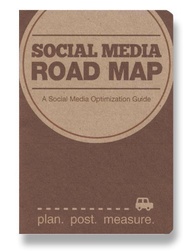 Social Media rock stars Noland Hoshino, Ash Shepherd and Zan McColloch-Lussier just released the newest SMO book, Social Media Road Map. This little book is pure genius. Fun, straight-forward and actionable.
Social Media rock stars Noland Hoshino, Ash Shepherd and Zan McColloch-Lussier just released the newest SMO book, Social Media Road Map. This little book is pure genius. Fun, straight-forward and actionable.
Among other bits of awesomeness, they recommend a fab messaging exercise:
“Create a bumper sticker message that reflects your brand, position, and personality. Your message should motivate and excite your audience so they show their support by ‘honking’ along with you.”
They’re recommending this in the context of social media. But this is a good exercise regardless of context. It forces you to get down to the essence of what you are trying to communicate.
Netizens are skimmers, not readers. And your donors, supporters, volunteers and fans are all Netizens. They are bumper sticker hounds.
If finding the right words feels daunting, start by asking yourself if there’s a way you can swap out one or two words so it better reflects your organization’s unique personality, what you stand for, and what you’re asking people to do.
Take, for example, these subject lines plucked from the flurry of emails I recently received on Seattle’s GiveBIG Day. On May 2, Seattle-ites were receiving dozens–if not hundreds–of emails from organizations asking them to participate in this community-wide day of giving. Every single organization and email had the same ask: Give to us today. Perfect opportunity to let your personality shine through, right?
- GiveBIG is today.
- Get ready to GiveBIG.
- GiveBIG. Here. Now!
#1 represents the vast majority of the emails I received. Nothing wrong with it. But it doesn’t have a lot of personality. It doesn’t make you want to honk.
With #2, you might be inclined to at least remind yourself where your horn is. (Seattle-ites don’t honk. It’s not polite, the rationale goes.) But you could easily get distracted by your radio once you found the horn and forget you were going to honk.
#3 reads like a moral imperative. It makes your eyebrows shoot up as you think, “Dang, I better get giving!”
Interestingly, #3 mainly stood out because of punctuation. Punctuation practically begs to be fiddled with–commas, exclamation points, em-dashes, colons.
Try it. Take your current tagline or boilerplate sentence and switch up the punctuation or switch out a word or two. Is there a way you can make it into a bumper sticker you’d be proud to slap on your car?
The bumper sticker exercise is one gem among many in the Social Media Road Map. At $7.95, this is one of the best investments your organization can make.